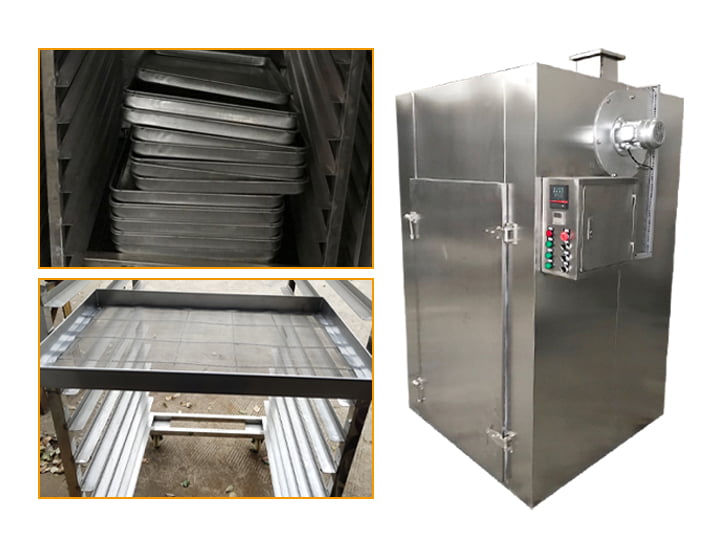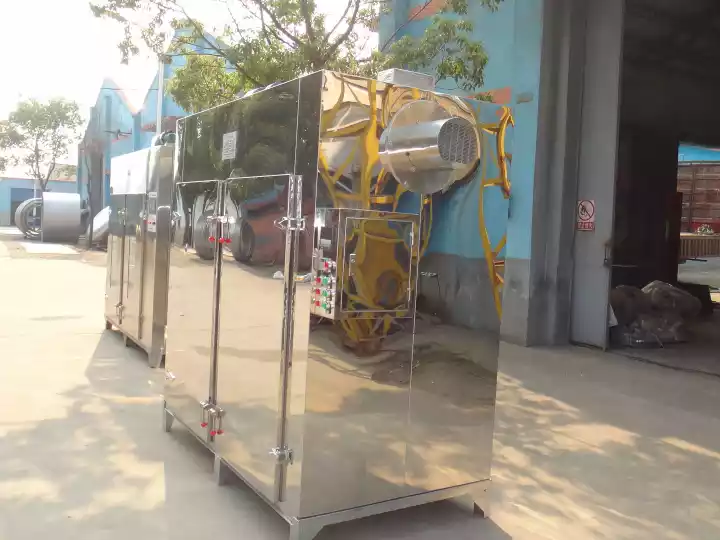Several steps to producing meatballs
In the fast-paced world of meat processing, efficiency and quality are paramount. Taizy Meat Processing Machinery, a leading Chinese manufacturer specializing in meat machinery, introduces a cutting-edge solution to elevate your meat processing capabilities — the Meat Dryer Machine. Explore the features and benefits of our innovative product designed to revolutionize the way you handle meat drying processes.
Advanced Technology for Optimal Drying
Taizy’s Meat Drying Machine is built on the principle of hot air circulation, utilizing steam or electricity as a heat source. The convection heat exchange facilitated by a powerful fan ensures efficient heat transfer while constantly replenishing fresh air and expelling humid air. The hallmark of this machine lies in its internal hot air circulation, enhancing thermal efficiency and conserving energy.
Intelligent Control System for Precision Drying
Equipped with an intelligent control system, our Meat Dryer Machine allows temperature adjustments within the range of 50℃ to 120℃. This flexibility in temperature control caters to varying meat humidity and drying requirements. The precision in temperature regulation ensures optimal drying results, maintaining the texture and flavor of the meat.

Durable Construction for Long-lasting Performance
Crafted from high-quality 304 stainless steel, the meat dehydrator machine boasts robust and durable construction. The interior is insulated with an 80mm thick layer of insulation material, ensuring heat retention during drying. The top of the chamber features both a moisture exhaust port and an air intake port, creating an environment where the air inside is consistently fresh, contributing to the delectable taste of the dried meat.
Specifications of Taizy’s Meat Dryer Machine
- Dimensions: Width 1500 × Depth 1200 × Height 2120 (mm)
- Working Room Size: Width 760 × Depth 1000 × Height 1460 (mm)
- Equipped Fan Power: 0.55KW×1
- Moisture Exhaust Fan: 0.18KW (automatic, semi-automatic, and time setting options)
- Temperature Control: ±5℃
- Heating Tube: U-shaped, 12KW
- Temperature Range: Room temperature~120℃
- Trolley: 9507001400mm (stainless steel) *1
- Tray: 64046045mm*24 (material: SUS304)
- Total Power: 12.73KW
- Weight: 680kg
- Material: 304 stainless steel (inside and outside), thickness 1.2
- Packaging Dimensions: 165013502370mm
- Weight of Packing Box: Approximately 70KG

Unleash the Potential of Your Meat Processing with Taizy
Taizy Meat Processing Machinery takes pride in offering high-performance meat drying solutions to enhance your processing efficiency. If you need a reliable and advanced meat drying equipment, do not hesitate to contact us. Elevate your meat processing capabilities with Taizy’s innovative technology and experience a new standard in quality and efficiency. Contact us today for more information on how our Meat Dryer Machine can transform your meat processing operations.
